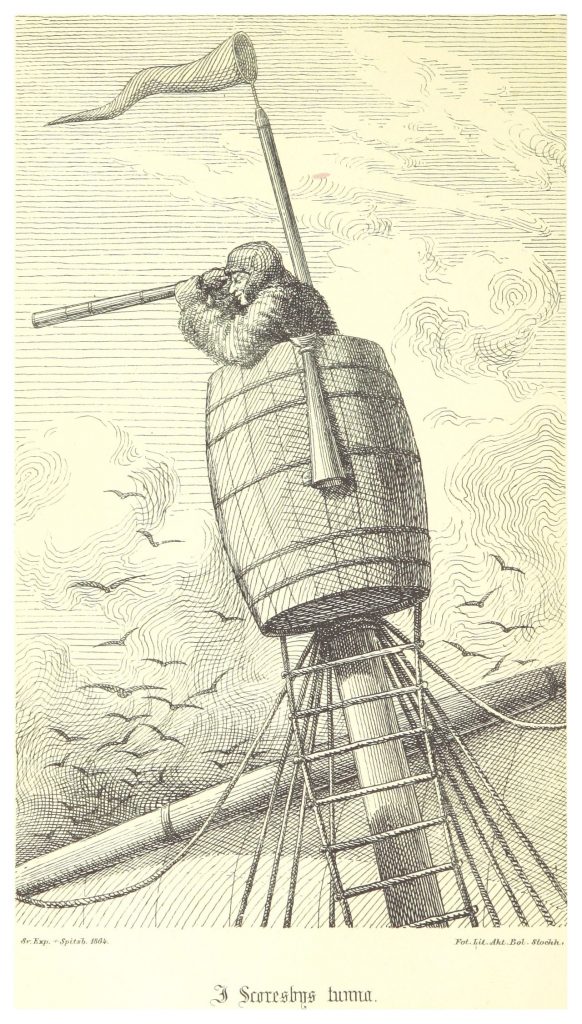
You can’t help but notice how common it is that things related to seafaring are named after animals. In a house you’ll find a table, chair, bed, cupboard, bookcase, rafter, gable, and joist. But aboard a ship in the great age of sail you’d hear the terms gooseneck, crow’s nest, crowfoot, duck, cat, cathead, cat hole, wildcat, catboat, cat-rig, catwalk, cat-o-nine-tails, ratlines, horse, dead horse, Flemish horse, saddle, cow hitch (which is the same thing as a lark’s head), sheepshank, leg-o’-mutton, knee, jackass, camel, horns, bridle, bullnose, bullrope, bull’s eye, cockpit, cockbill, cockboat, fox, dog, doghouse, dog vane, dog watch, and hounds. An old boat can lose its shape and become “hogged,” and “pig-ballast” was molded in forms called “sows.” A “Donkey’s breakfast” was the term the old seamen used to describe their straw mattress. The “manger” is the space immediately inboard of the hawse pipes. Then there’s the monkey fist, monkey jacket, monkey’s blood, monkey bridge, monkey chain, and monkey rail.
Of course, not everything on a boat has a metaphorical name; we have masts and cleats and lines. Yet, when the old sailors sought a colorful moniker for a piece of gear, they looked to familiar and friendly animals. It is notable that there is a scarcity of sea creatures among these names. We do have a dolphin-striker, and a pelican hook, and a fish-plate, but no shark-widgets; and the crow’s nest is named after a land bird, not a gull or albatross. We also don’t see fearsome animals like wolves and tigers represented.
Humans evolved on land as hunter/gatherers and then farmers, and until this century the majority of the people of the world situated themselves in rural areas, not cities. Before then, most people lived and worked in the countryside, in close, everyday contact with the animal kingdom, both domestic and wild.
But long ago, at least 50,000 years in fact, humans took to the sea. We are challenged to comprehend the courage and imagination required to be the first to sail away from the sight of land, hearth, and home, into that alien environment, removed from everything recognizable. Did the homesick sailor, now in a fearsome, barren wasteland far from the familiar things of life, construct the mental furniture of his surroundings out of his companions—the comforting creatures humans have known forever—in the unconscious effort to place himself at home? Well, maybe he did.
